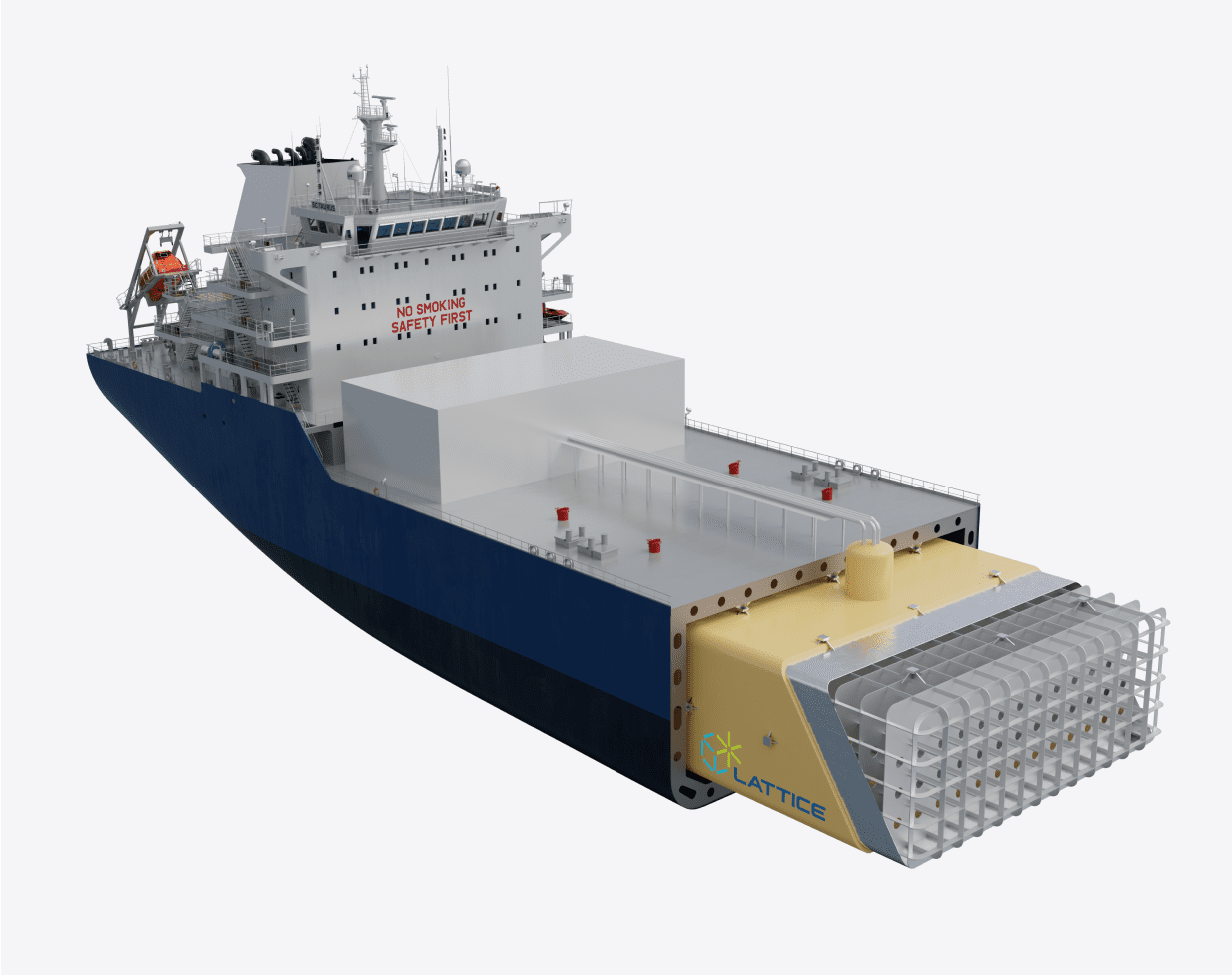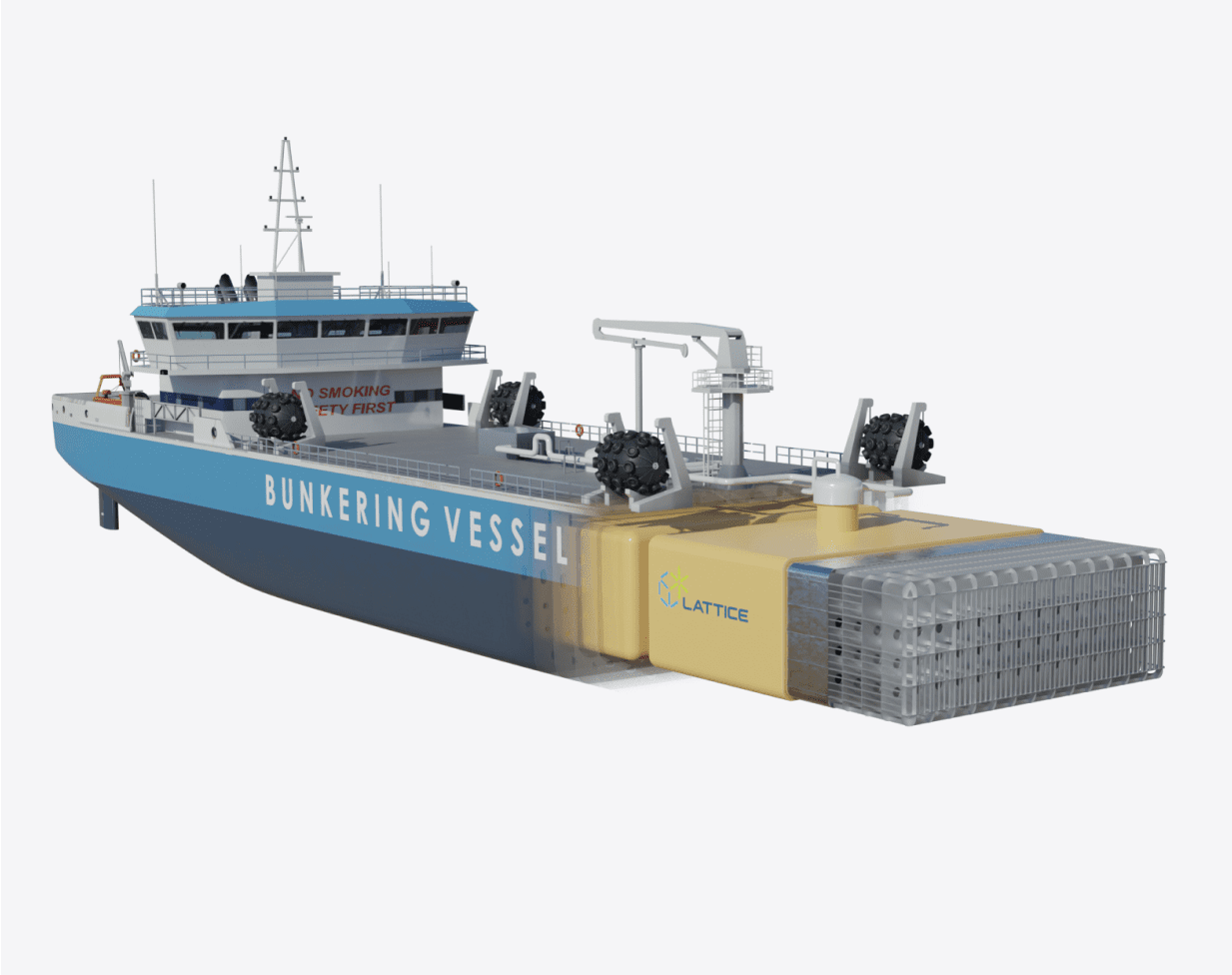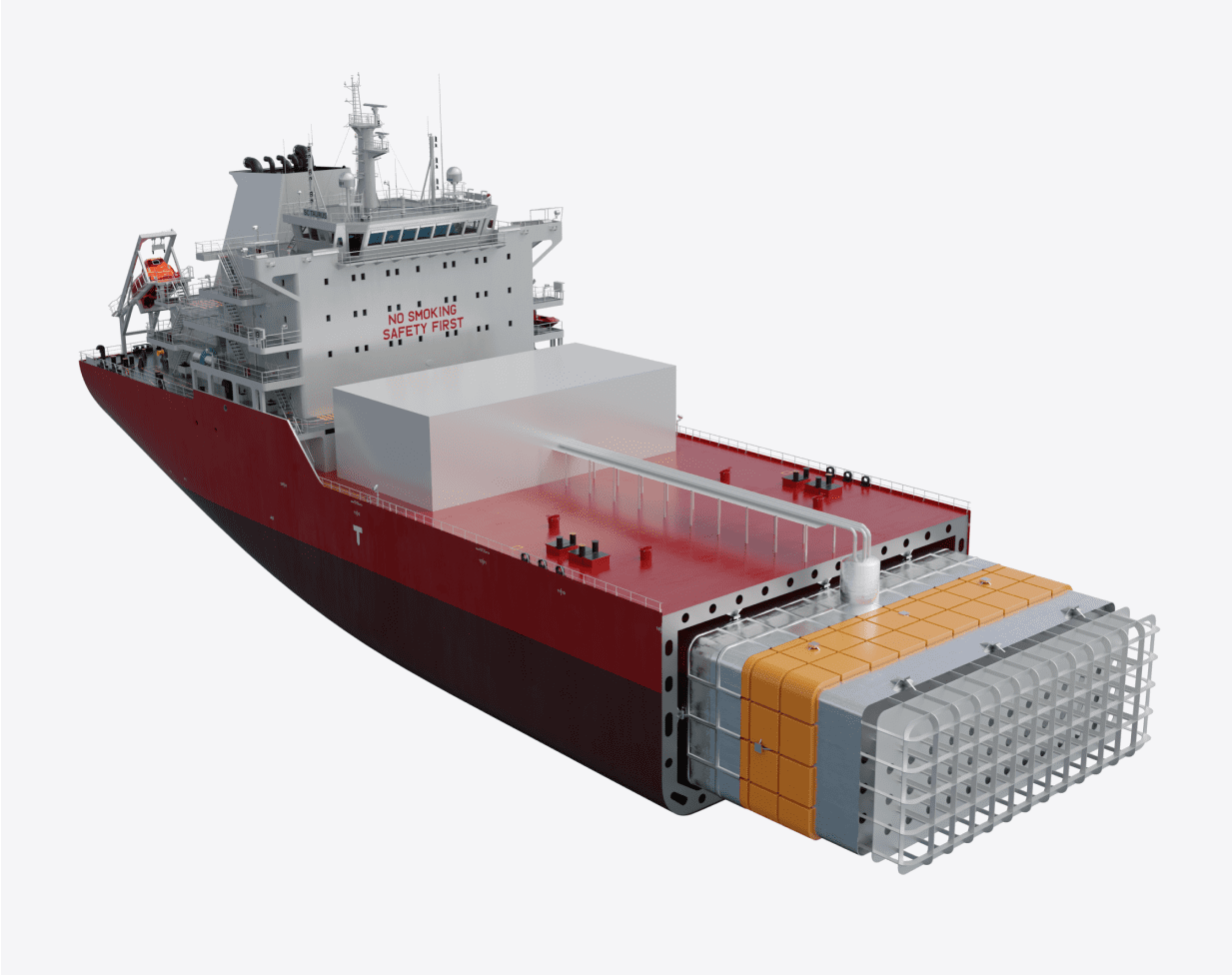Carbon Capture and Storage (CCS) is seen as a crucial part in reducing global CO2 emissions and reaching the Paris Agreement goal of a maximum temperature increase of 1.5 degrees Celsius. To achieve this, building an economically viable CCS value chain is paramount. But it can only be done by leveraging on economies of scale, from capture to sequestration or utilization, and this is where the game-changing LPV technology introduces unprecedented opportunities.

Today, shipping and onshore transportation of LCO2 accounts for 40-50% of the overall CCS value chain cost. One of the main reasons is that relatively small volumes are stored and transported with inefficient current logistic solutions. Scalability is required throughout the value chain to bring costs down and the LPV is a key enabler in making this happen. This free-shape and free-size containment solution, capable of handling pressure ratings of 30+ barg, enables large-scale storage and shipping of LCO2 for both low- and medium pressure applications.
The LPV offers ship owners and designers the opportunity to optimize the vessel hull geometry and operational performance without impacting the cargo capacity. The flexible LPV design can be tailored to fit the optimized hull shape, thereby enabling a more compact and cost-efficient vessel. Alternatively, the LPV can be designed to fit into an existing hull design, increasing cargo capacity through a more superior volume utilization than cylindrical or bi-lobe tanks. Both options offer substantial CAPEX/OPEX savings or increased revenue streams, bringing down cost per m3 shipped.
LCO2 carrier: LPV vs. Cylinder/Bi-lobe cargo tanks
While there are still uncertainties around the most optimal and cost-efficient pressure rating and vessel sizes for LCO2 shipping, the trend is now shifting towards low pressure LCO2 carrier with a cargo capacity of 20,000-50,000 m3.
LATTICE has carried out one such case for a 40,000 m3 LCO2 carrier design with 8 barg design pressure together with a well-known gas carrier owner and operator. Through scalability and optimized volume utilization a 40 m reduction in vessel length was achieved. Further, the number of tanks required were reduced from 7 to 3, with the same total weight of 5,800 tons for the full containment system. As a result of the optimized hull dimensions and tank configuration a CAPEX reduction of more than USD 12,000,000 was obtained. In addition, significant OPEX savings from reductions in fuel consumption and corresponding reduction in CO2 emissions is expected over the vessel lifetime. For LCO2 carrier owners or operators, LATTICE delivers a substantial cost saving and/or revenue enhancing opportunity and competitive edge that cannot be ignored in the emerging CCS value chain and LCO2 shipping sector.
Contact us to see how we can improve your fuel tank performance.
The tank design is capable of handling pressure ratings of 30+ barg, offering ship owners the opportunity to operate the vessel in both LP and MP trades as required.
Optimize your cargo tank configuration with LPV to ensure the most compact and efficient hull shape, saving both CAPEX and OPEX, whilst maintaining volumetric payload capacity.
Within existing cargo hold spaces to increase vessel payload capacity and increase revenue streams.
The free-shape, free-size LPV design allows for limitless scalability and reduced number of tanks and related equipment and systems, enabling economies of scale and bringing down cost per m3 transported.

As the global energy demand continues to grow, the small-scale LNG segment – typically divided into small-scale LNG carriers and bunkering vessels – is gaining traction. While the necessity for smaller size vessels is increasing, the cost of building new vessels or retrofitting existing ones is often a challenge when trying to build a profitable business case. Vessel optimization is a crucial factor in achieving this goal, and with the unique features of the LPV technology it is now within reach.

Today there are approximately 100 small-scale LNG carriers and bunker vessel in operation globally. Small-scale LNG and bunkering vessels represent a significant area of opportunity for ship owners and operators as the global LNG trade continues to grow, however, stakeholders face financial uncertainties when investing in vessels for this developing sector of LNG transportation. With a cost of close to $60 million USD for a mid-size LNG bunker vessel, owners are looking at a long return on investment (ROI). By optimizing the vessel design and layout, standardizing equipment, and increasing vessel efficiency, the shipping industry can drive down the cost of small-scale LNG vessels and make the most of a burgeoning market.
The LPV offers ship owners and designers the opportunity to optimize the vessel hull geometry and operational performance without impacting the cargo capacity. A good example of this is the possibility to design the vessel with a flat deck, increasing both safety and operational efficiency. The flexible LPV design can be tailored to fit the optimized hull shape, thereby enabling a more compact and cost-efficient vessel. Alternatively, the LPV can be designed to fit into an existing hull design, increasing cargo capacity through a more superior volume utilization than cylindrical or bi-lobe tanks. Both options offer substantial CAPEX/OPEX savings or increased revenue streams, bringing down cost per m3 shipped.
Contact us to see how we can improve your fuel tank performance.
Single, prismatic tanks that allow for flat ship decks for bunkering vessels provides advantages for operators. Moreover, LPV tanks are tailored to the vessel and according to its specific operating environment (harbor conditions around the world vary enormously).
The tank design is capable of handling pressure ratings from as low as 1 barg up to 30+ barg, presenting a much higher operational flexibility than cylindrical or bi-lobe tanks.
Optimize your cargo tank configuration with LPV to ensure the most compact and efficient hull shape, saving both CAPEX and OPEX, whilst maintaining volumetric payload capacity.
Within existing cargo hold spaces to increase vessel payload capacity and increase revenue streams.
The free-shape, free-size LPV design allows for limitless scalability and reduced number of tanks and related equipment and systems, enabling economies of scale and bringing down cost per m3 transported.

Hydrogen is a zero-carbon energy source and therefore viewed as a key contributor to global emissions reductions. While local distribution of hydrogen can be done through pipelines, the most viable option for long-distance transportation is shipping. Safe, large-scale storage of hydrogen is challenging, and even more so when transported on a vessel where the containment system is exposed to continuous dynamic loads from the marine environment. With the LPV, combined with the patented V-CCS vacuum insulation technology, these challenges are now much easier to deal with.

The V-CCS technology combines the unique features of the LPV – scalability, flexibility and pressure loading – with an innovative vacuum insulation solution built on proven technologies from the LNG industry. The LPV inner tank is covered with pre-molded V-PUF blocks (similar to conventional polyurethane foam insulation, but with improved insulating properties) that are bolted to the tank outer shell in an overlapping sequence. Covering the V-PUF blocks is a vacuum jacket made from a very thin stainless steel corrugated membrane. The corrugations allow for thermal expansion/contraction of the LPV inner tank without rupturing the vacuum jacket. The ambient pressure loads acting on the vacuum jacket are taken up by the V-PUF blocks and transferred to the tank internal lattice structure, allowing for a very flexible, light-weight solution that is fully scalable, cost-effective and easy to install – all of which contributes to enhancing hydrogen’s economic attractiveness and viability in the market.
LATTICE holds an AiP for a 12,500m3 LPV with the V-CCS vacuum insulation, awarded by Lloyd’s Register Asia in 2020. Due to the flexibility and scalability of both the LPV and V-CCS design, tank sizes of 40,000+ m3 for a single tank is achievable.
Large-scale shipping of LH2 between Australia and Korea
LATTICE is part of a Korean-Australian consortium that are developing designs for large-scale, standardized floating LH2 export and import terminals and for a large-scale gas carrier. The 50,000m3 LH2 carrier, utilizing four cargo tanks of the 12,500m3 design granted AiP by LR, will connect the LH2 export production and storage terminal, located in Australia, and the LH2 import storage terminal, located in Korea.
The transportable barge export terminal has topside electrolysis and liquefaction, with LH2 product stored in vacuum insulated LPVs in the hull. This lowers capex and “fast-tracks” commercial project developments. The export terminal will be built in a Korean shipyard and transported to Australia for LH2 production from Australia’s abundant green electricity supply, as a “plug-and-play” facility. This brings a number of benefits for interested parties developing Australia’s renewable hydrogen export industry: fabrication quality assurance, short delivery time, minimal land use with less environmental impact, a faster approvals process and most important, high public acceptance and Social Licence to Operate (SLO).
The 75,000 m3 LH2 storage and 120 tpd (44,000 tpy) LH2 production capacity will be the world’s largest Green LH2 facility.
Contact us to see how we can enable your LH2 containment requirements.
The patented V-CCS vacuum insulation technology enables large-scale storage and transportation of LH2 without compromising safety.
Optimize your cargo tank configuration with LPV to ensure the most compact and efficient hull shape, saving both CAPEX and OPEX, whilst maintaining volumetric payload capacity.
Within existing cargo hold spaces to increase vessel payload capacity and increase revenue streams.
The free-shape, free-size LPV design allows for limitless scalability and reduced number of tanks and related equipment and systems, enabling economies of scale and bringing down cost per m3 transported.

Approved by ASME, all major Classification Societies, US Coast Guard